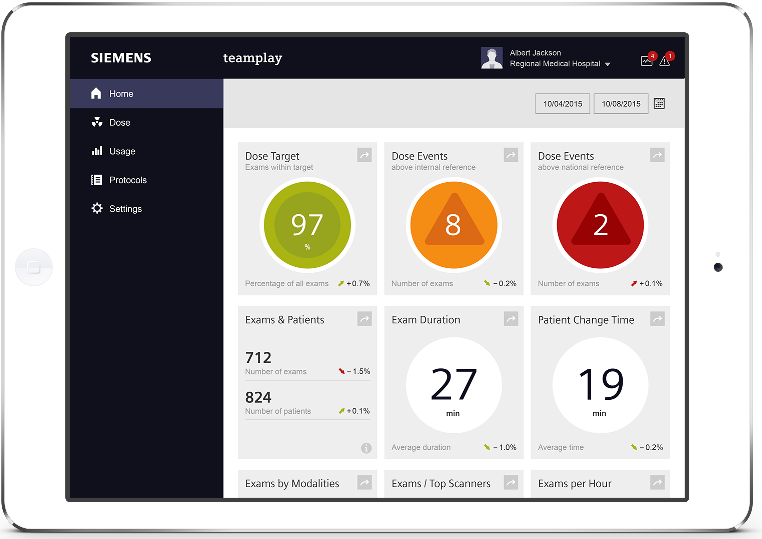
Greg Freiherr has reported on developments in radiology since 1983. He runs the consulting service, The Freiherr Group.
Radiology: Going Along to Get Along

Siemens’ teamplay network brings together providers, knowledge and data to help radiologists solve routine problems, such as how to optimize radiation dose. (Graphic courtesy Siemens)
Radiology led the way as the first medical specialty to demonstrate that digital medical records could improve efficiency and effectiveness. The rest of the medical community has followed suit, leveraging electronic medical records (EMR) and enterprise imaging to draw medical specialties closer.
Ironically, this spread of information technology has threatened radiologists’ time honored place as consultants, raising the potential that other specialists might perform what had traditionally been radiological analyses. In response, organized radiology has extolled the virtues of putting the “patient first,” encouraging its members to look for ways to be more directly involved in the planning and administration of patient care.
The tools for doing so have begun to appear. In the Enterprise Imaging Technology Report at RSNA 2015:
Philips showcased Measurement Assistant for the radiologist and Oncology Dashboard for the oncologist. Measurement Assistant helps radiologists assemble the measurements of cancer tumors that oncologists analyze on their dashboard, complementing those measurements with additional information addressing patient treatment. Philips exec Mark Khalil told me, “This is the beginning of a collaborative sharing of results between the radiologist and the oncologist.”
Siemens described its teamplay network as the means for bringing together providers and patients, along with clinical data, in a way that accelerates decision-making. The goal, Siemens exec Arthur Kaindl told me, is to help radiologists “solve local challenges” such as optimizing patient radiation dose or making the most efficient and effective use of imaging equipment.
Sectra demonstrated how a mouse click on its Enterprise Image Management system can pull up all the medical images needed by a multi-specialty oncology board from ultrasound to mammography, microscopic images of a biopsy and specimen X-rays.
The use of these technologies will help blunt the threat that radiology might become an afterthought in the patient care process. But to truly join the team, radiology needs to read from the same playbook as the rest of medicine. To Cerner that means an EMR-driven workflow.
“The electronic medical record is the workflow engine for the care team,” Cerner exec Brandon Long told me at RSNA 2015. Long explained that the company’s EMR has been tailored to include radiologists, providing them the context they need to “help the care team take action.”
But PACS and RIS aren’t likely to go away, at least not any time soon. In the parlance of MACH7 Technologies, they are part of an evolving “ecosystem” of information technologies. Different technological species — worklists, reporting solutions and diagnostic viewers — plug into the enterprise imaging platform offered by Mach7. This diversity is necessary, according to Mach7 Chief Technology Officer Eric Rice.
“I have yet to find a single PACS or viewer or portal or sharing or reporting solution that fulfills the needs of all specialties across all departments within a facility,” Rice said.
Radiology’s experience and decades-long position in the digital world have positioned it to play a direct role in patient care. That may only happen, however, if the technologies underlying PACS and RIS continue to evolve to suit the changing needs of radiologists — and radiologists use them in ways that put patients first.
Editor’s note: This is the second blog in a series of four by industry consultant Greg Freiherr on Enterprise Imaging and the Patient. The first blog, “Meaningful Use is Dead … All Hail its Meaning,” can be found here.


 December 09, 2025
December 09, 2025 









